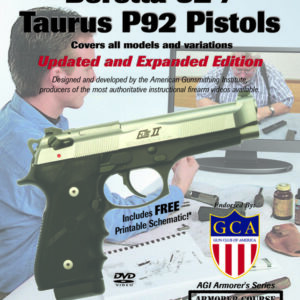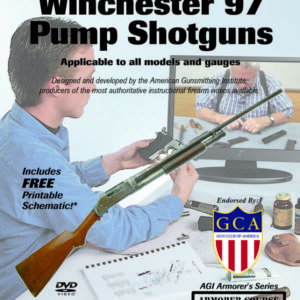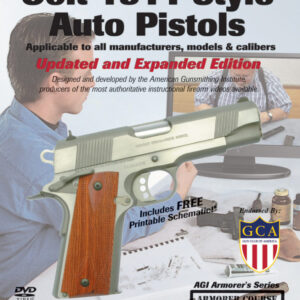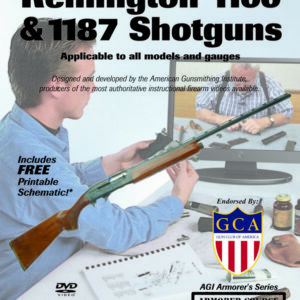Description
Bob Dunlap takes you through the design, function, and repair of Bill Ruger®s wildly popular revolver, using a cut-a way gun so that you can actually see the parts function and interaction. Included are tips on how to spot and correct common problems. If you want the quick course on how to get the worlds most popular Single Action Revolver apart, back together, and operating as intended, then this course is for you (if you want the long course, look into our basic 108 hour Professional Gunsmith Course.)
Among the items covered are:
History
- History and origins of Sturm, Ruger® Firearms Co. in 1949
- The Ruger® Standard Auto, the gun that made the company into a successful business
- 1953, their first revolver, the Single Six, flat loading gate and all
- 1955 saw the first center fire, the Blackhawk®, and the small .22 Rim fire Bearcat®
- Super Blackhawk®, large frame .44 Remington Magnum, debuts in 1959
- 1960 sees debut of .44 Mag Deer slayer semi-auto carbine
- In 1963 the Hawkeye® single shot on a Blackhawk® frame arrives in .256 Winchester Magnum
- Ruger®s most successful design, the 10/22® hits the market
- In 1973 the famous new model Blackhawk®s arrived, the first six guns safe to carry with 6 rounds
- Various kinds of firearms follow
- 1992 the Ruger Vaquero® arrives
- Various Blackhawk® and Single Six models shown
Safety Conversion Unit
- Differences between the old & new models
- How the transfer bar works
- Weaknesses of the original Colt design
- A cautionary tale
- Ruger® brings out a conversion unit for the old model single actions
- Who originally invented the transfer bar
- Ruger® wants all old models sent to them for conversion at no charge
- Original parts will be returned to you
- Loading gate and loading notch on hammer work as originally designed
Design & Function
- Visual demonstration of the interaction of all parts during the firing cycle
- How opening the loading gate releases the cylinder stop
- Explanation and demonstration of how the base pin plunger allows the transfer bar to work
- See how the hand does its job, the two stage operation
- A clear explanation and demonstration of how the hammer and trigger interact with the transfer bar
- Why the hand spring is a much superior design than that of the Colt
Disassembly
- Extensive disassembly, parts not removed have removal described, including firing pin
Cleaning & Lubrication
- AGI cleaning & lubrication methods shown, along with the reasons for their use
Reassembly
- Making sure you have no parts left over
- Disassembly and reassembly of an old model with the conversion unit
- Repairing an over-tightened grip panel
Common Problems/Repairs
- Subject revolver has rotational play, end shake, and times up slow (what these mean, and how to correct them)
- Correcting the end shake, it is not easy, but this is how you do it
- How to correct the rotational slop
- Ruger® springs are designed for Ruger®s, stay away from aftermarket springs other than Wolfe
- Be careful of trigger jobs, since most Ruger® hammer/sear engagement are negative. They must be positive if you do a trigger job. If you do not understand positive and negative engagement angles, get the Trigger Course
- Correcting the timing issue, stretching the point
If you noticed how often the terms “explanation” and “demonstration” are used, you may be getting some idea of why this course is necessary for any Ruger® single action revolver owner, or someone who intends to be.




